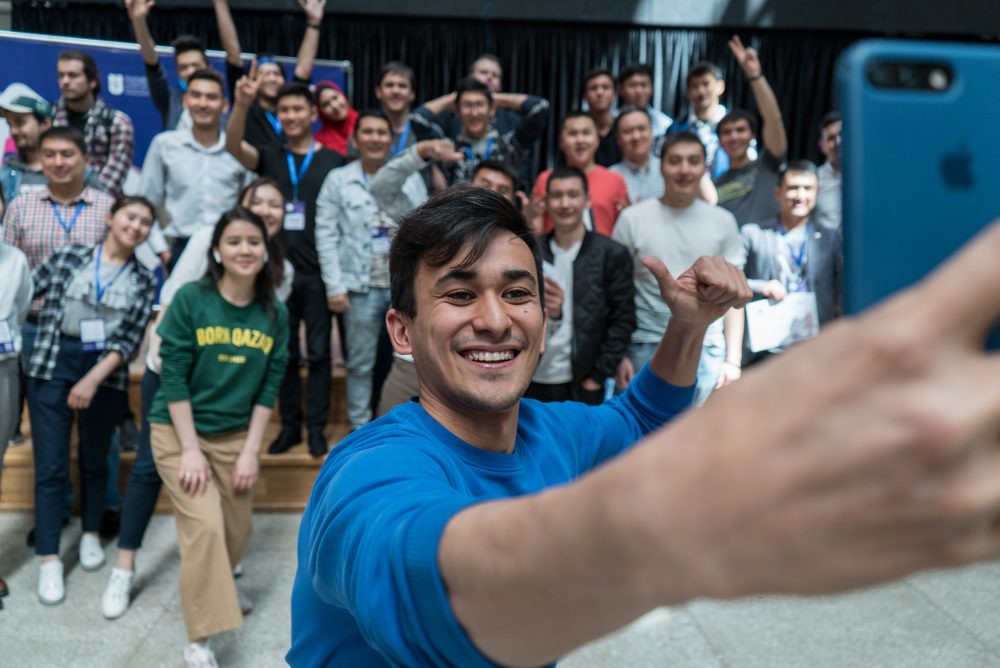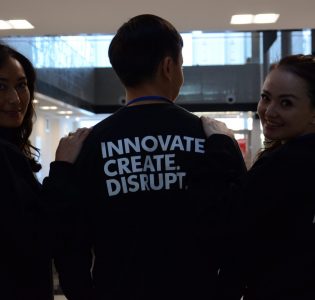7 tips for Startupers
Tip # 1. Keep in mind …
That before initiating a startup you most probably were an employee or provided services under a civil contract to other companies, Kazakhstani and/or foreign.
The idea that once you “terminate employment or civil law relations – that it is the end of your obligations” does not always apply. It is possible that by signing a contract, you could have assumed obligations that will be binding after the actual termination of the relationship, perhaps even indefinitely. For example, the obligation of non-disclosure of confidential information (NDA, non-disclosure agreement) or non-competition (NCA, non-compete agreement).
What startupers need to know about contracts with employers or contractors:
- Nondisclosure agreements should be read carefully!
- It is necessary to ascertain who owns the right to intellectual property (IP) – products, services, technologies, and industrial designs – that you created and in the creation of which you were involved. Some companies consider their intellectual property those products that are produced by employees during the contract period, even during off-work time. Therefore, you have to be careful.
- If you have been involved with a contractor from another country in the development of intellectual property, find out how IP disputes are resolved in those jurisdictions. For example, in the United States, a non-compete agreement is often signed along with a non-disclosure agreement, and this establish a specific time frame (6 months, 2 years, or another term) during which the employee or contractor may not engage in competing activities or work for a competitor. While in Kazakhstan, such an agreement (or relevant provisions in the employment contract or contractor agreement) might not be strictly enforced and may only have a psychological effect on former employees, in other countries such as the USA for instance, these contracts are in fact legally binding in most states. Therefore, when signing a contract with a US investor, verify whether it includes the NCA provisions.
Tip # 2. Rights
Intellectual property refers to intangible property that arises from the intellect, imagination, and creativity of the “creator-author”, who seeks legal protection of his or her ideas or creation. When an author works under an employment contract and the parties have not agreed otherwise, all exclusive rights, except the author’s personal rights, by default are owned by the employer.
At the same time, if parties other than the company’s employees are involved in the development, care must be taken so that proper intellectual property formalities are upheld. This is especially true when employees of multiple organizations are involved in the same development.
Tip # 3. Arrangements must be executed in writing
When disclosing information to any third party, whether it is a potential investor, partner, employee of another company, have them sign a written agreement on non-disclosure of confidential information. Be sure to sign it in advance, not after you disclose sensitive information. After all, any information or idea can inspire others to try and recreate or copy the technology that you have already invented.
In the nondisclosure agreement clearly specify what information you consider protected against unauthorized disclosure, and in which cases the party receiving such information may disclose it to third parties. Write in the contract the intentions of each party. Make sure the contract clearly identifies the person(s) you are negotiating with.
Tip # 4. Define an intellectual property protection strategy
Patenting is not the only possible way to protect the outcomes of intellectual activity. For example, you might also protect a technology by making it difficult for your competitors to reverse engineer, perhaps by keeping the production regime (know-how) secret.
Tip # 5. Register your trademark (logo) in the Republic of Kazakhstan and abroad
Any startup should have a name that will distinguish it from others.
Even in the early days it is desirable to have a logo that visually identifies your startup, and that over time this logo might help you gain brand recognition in the market.
But you need to be careful because you can develop a logo and spend a lot of money on the production of necessary attributes, etc. and afterwards a third party may step in and say that you cannot use the logo because it is a registered trademark.
In this regard, theoretically there will be two options:
“Pessimistic” – you will be banned from using it and forced to get rid of or even physically destroy all products with the logo.
“Optimistic” – you will be allowed to use the logo, but you will have to pay to use it. When and how much will be decided by the parties through negotiations.
To avoid the above scenarios, before you design the logo be sure to:
- check, whether there is a confusingly similar TM registered (pending).
- apply for registration in all countries of interest to you. After you find that there are no pending registrations, then you must first register the TM in the Republic of Kazakhstan, and only thereafter apply for registration in other jurisdictions abroad.
- When applying for registration of a trademark, you need to think strategically ahead about the not only current protections, but any future protections you might need. It is important to bear in mind that the scope of protection of a trademark is defined by the image and list of goods and services for which the trademark is being registered.
- In addition, each jurisdiction has its own peculiarities of TM registration. For example, before applying in the United States, one must have begun using the TM or file a Declaration of Intention to Use the TM. And in the UAE, one can not register a trademark for alcoholic beverages or pork.
- International treaties, including those ratified by the Republic of Kazakhstan, will permit startupers to take advantage of simplified application opportunities. For example, the Madrid Agreement Concerning the International Registration of Marks and the Protocol – allows for a single application to be submitted that specifies one or multiple countries, but this applies to only countries party to these Treaties. The application is to be submitted in one language and the fee is paid in one currency — Swiss francs.
Tip # 6. Patent where it is necessary
It is necessary to determine in advance the countries you are interested in, since the patent has a territorial effect.
There is something called a provisional application for patent, but unfortunately, it is only currently available and protected by law in the United States The idea of a provisional application is that it can give you interim protection in the United States for up to one year, while you negotiate with investors. You can submit a provisional application for a patent in the United States, with a filing fee ranging from $ 65 to $ 260. In this case. The “priority date” is that of the filing of the provisional application and is valid for 12 months.
Another option is to file the main application in one of the jurisdictions and declare priority on it within 12 months from the date of filing the application. For example, you can file an application in the Patent Office of the Republic of Kazakhstan, conduct negotiations and within a year apply for a Eurasian patent, US patent, EU patent, and other patents of other jurisdictions.
Or, on the basis of the national application (or apart of it) file an international application provided under the international Patent Cooperation Treaty (PCT). This Treaty provides for the possibility of filing one international application and the establishment of a so-called “reservation of time” to apply in other jurisdictions within 30 (or 31, depending on the particular jurisdiction) months from the date of filing of the first national application. This will allow you to secure patent protection for your product or technology at a relatively low cost. And allows you to secure effective protection around the world for 2.5 years.
Tip # 7. Never violate the rights of others
Besides ensuring that your IP is protected, it is equally essential that you do not violate the rights of third parties when you launch a product. You need to ensure that your product (whether software or hardware) does not violate any one of the hundreds of patents held by others.
To avoid such problems, before the start of the project it is necessary to conduct a patent clearance search, which western experts call a Freedom to Operate (FTO) search.
What a startuper should know about FTO
- Clarify the status of the patent. A patent must be maintained on a annual basis, and if it is not renewed and can not be restored, the patented technology can be used without violating the rights of third parties.
- Given that the patent has territorial effect, a patent for a product in the United States does not prohibit its use by third parties in other jurisdictions. Therefore, it is important to select the right list of countries where you want to obtain protection. You need to pay careful attention to the names of nations and the scope of protection given to each country, because it may be more confusing and limiting than you think. For example, pay attention to how Taiwan is in the list, it is also called the Republic of China. Whereas the patent for mainland China, or the People’s Republic of China – does not grant exclusive rights to administrative districts of Hong Kong and Macau. And applications filed for patents in France do not apply to French Polynesia.
- The search should be carried out not only for the product as a whole, but also for its components. For example, your objective is to launch a new smartphone. In FTO, a search is conducted on the applications and issued patents not only for smartphones but also on their components – processor, memory, wifi modules, etc.
- Determine the scope of protection. The scope of protection of the invention is determined by the patent claims. Accordingly, the violation of rights is the use of all the features of an independent claim. For example, if a patented device consists of components A, B, C and D, and your device consists only of A, B and C, this will not be considered a violation of rights.
- If the FTO finds that you cannot launch your product, you should not lose all hope because there are still some possible resolutions. , You may contact the patent holder and propose to buy it, get a license to use the product, and, if you fail to come to an agreement, find options for contesting the patent.
Remember that any intellectual property protection must be consistent and reasonable. Good luck in your endeavors!








